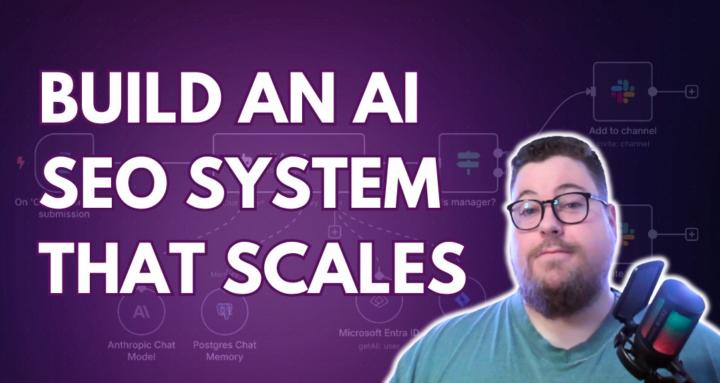Sep 3 (edited) • 📈 Case Studies
How I Ranked #1 For Project Management Software
Outcome, in plain numbers
- From 100k to nearly 1.3m monthly organic visits.
- Ranking for “Project Management Software” and thousands of adjacent high-value terms.
- Some individual pages generate $10k per day. That is page-level revenue, not just site-wide.
- Portfolio lift followed as we replicated the wins.
While many publishers, affiliates, and software companies are experiencing multi-year traffic declines, this site broke out and accelerated. The win was not volume-related. It was all about focus. We consolidated strength, concentrated authority, and protected what worked.
Here’s how we pulled this off
1) Eliminate keyword cannibalization
What I saw
Multiple pages targeting the same or very similar terms were splitting signals and confusing Google.
What we changed
Consolidated overlapping assets into fewer, stronger pages using custom cannibalization analysis tools. Preserved the best content, redirected the rest.
On a high-authority domain, this produced ranking lifts almost immediately.
Why it works
One clear intent per query lets link equity, user signals, and historical performance compound on a single URL.
2) Build a champion page for the head term
What I saw
Several similar pages were going after long-tail variations, while the category head term lost rankings. It ranked #8 at its lowest point.
What we changed
Focused our efforts on a single flagship “champion” page to win the biggest keyword on the site: Project Management Software.
Redirected weaker or underperforming variants into the champion.
Fed it links, topical coverage, and historical data.
Why it works
Google increasingly rewards comprehensive, authoritative resources that satisfy broad intent. Champion pages aggregate both authority and coverage across long-tail phrasing.
3) Replace JavaScript navigation with clean HTML
What I saw
A JavaScript-driven menu limited crawler visibility and throttled PageRank flow.
What we changed
Rebuilt navigation in plain HTML. The result was a visible unlock in crawling, indexing, and internal authority distribution.
Why it works
Simple, crawlable navigation is still one of the strongest internal signals for what matters on a site.
4) Re-prioritize homepage links
What I saw
Homepage link equity was diluted across lower-value destinations.
What we changed
Pointed the homepage to key categories and the main money pages. Treated it as the primary allocator of authority.
Why it works
The homepage is the highest-authority node. Intentional linking from it is the fastest path to lift for priority URLs.
5) Re-allocate link building budgets to proven winners
What I saw
Links were landing on dead or low-priority pages because the link team’s targets and allocation were off.
What we changed
Connected planning and spend. Directed budget to revenue pages with momentum and to new assets with clear upside.
Why it works
Backlinks amplify what already performs. Budget allocation prevents equity leakage.
6) Remove nonessential internal links from top performers
What I saw
High-value pages were over-linking out, bleeding PageRank, and diluting focus.
What we changed
Became selective about outbound internal links on the strongest pages.
Only kept links that reinforced user intent or pushed authority to priority URLs.
I ran three separate tests on smaller sites to confirm this would work before applying to our flagship. We then rolled out across all publications.
Why it works
Fewer, higher-quality internal links strengthen topical focus and preserve ranking power on the pages that print revenue.
7) Prioritize content updates over new page creation
What I saw
Plenty of indexed pages. Gaps within existing winners mattered more than net-new URLs.
What we changed
Refreshed high-potential pages rather than publishing more. Closed keyword gaps, expanded sections that were thin, and captured freshness.
Used custom AI tools to surface missing subtopics and created clear change lists for the editorial team.
Why it works
Updated pages already have crawl history and rankings.
Filling gaps lifts them faster than launching a cold page.
8) Expand the strongest topical clusters first
What I saw
The site chased many small or emerging categories at once. Coverage was shallow across too many areas.
What we changed
Focused on clusters where we already had traction.
Expanded one cluster at a time to create a compounding snowball of relevance.
Built AI tools to identify closely related topics with easy-win potential.
Why it works
Depth in one cluster increases the probability of ranking across the cluster. Breadth without depth spreads signals thin.
9) Scale internal linking with sprints and tooling
What I saw
Underperforming pages often had fewer than five internal links. Top performers commonly had twenty or more.
What we changed
Ran internal linking sprints to raise link counts and improve anchor text toward the most important pages.
Built AI-powered internal link suggestion tools and helped the team ship a proprietary internal linking plugin that outperformed commodity options.
Why it works
Internal links are the cheapest authority lever. Systematically pushing equity to money pages is one of the highest ROI activities in SEO.
10) Protect against untested, high-risk changes
What I saw
Large teams generate constant ideas. Some could harm rankings if shipped without validation.
What we changed
Instituted a test-first habit. Piloted risky initiatives on smaller sites before touching the flagship.
Pushed back on changes that lacked a test plan.
Built custom dashboards and collected massive amounts of data on all our sites.
I always had data ready to fend off untested ideas.
Why it works
Sometimes SEO needs to play defense against other departments.
Avoiding a preventable drop protects months of compounding gains.
---
What made this repeatable
This was not a solo show. Many talented people made this happen.
My role was to find the wins. We then launched validated changes to the flagship site and replicated winning strategies across the rest of our sites.
The result is long-term portfolio-level uplift.
Growth at this scale comes from concentrating power, not chasing volume.
Consolidate overlapping assets, direct link authority with ruthless intent, refresh what already ranks, and guard against changes that erode compounding.
Do this, and a single site becomes a flywheel that prints millions.
24
27 comments

skool.com/ai-seo
Free AI SEO Course. 50+ custom workflows, agents, and modules to scale traffic, build authority, and get mentioned by LLMs.
Powered by





